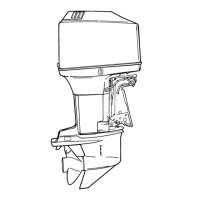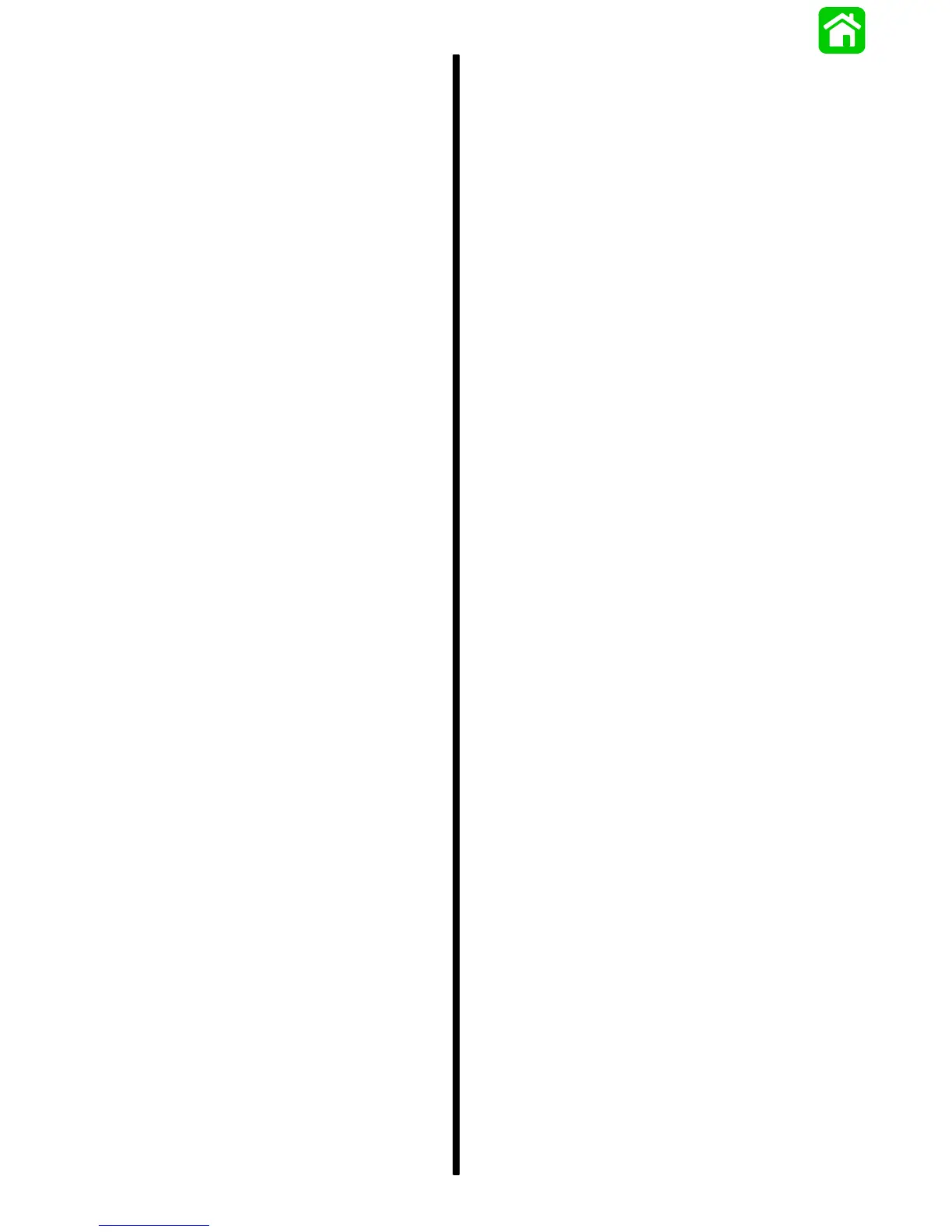2B-6 - ELECTRICAL 90-824052R3 JUNE 2002
IMPORTANT: Check that all connections are tight
prior to starting tests. Ensure that the battery
posts and terminals are clean and making good
contact. Verify with test equipment that wiring
harnesses are not at fault.
DETERMINING CAUSE OF PROBLEM
1. Connect outboard battery leads to battery(s) that
are known to be in good condition and are fully
charged.
2. Check voltage at battery(s) with an analog volt-
meter. Digital voltmeters are not recommended
as they may be inaccurate due to interference
from outboard ignition system.
3. Start outboard and run at 1000 RPM. Voltage at
battery should rise to and stabilize at
approximately 14.5 volts if system is operating
properly. If voltage does not increase from
previously checked battery voltage values, refer
to “NO OUTPUT,” following, for troubleshooting
procedures. If voltage exceeds 16 volts and
DOES NOT return down to and stabilize at 14.5
volts, refer to “CONSTANT HIGH OUTPUT,”
following for troubleshooting procedures.
PROBLEM: CONSTANT HIGH OUTPUT
1. Remove flywheel and visually inspect stator.
Discoloration of one or more poles, or burned
windings will require replacement of stator.
2. If no visual defects of stator are found, reinstall
flywheel. Temporarily install ammeter (of
sufficient size to carry 50 amperes) in series with
the RED output lead (MALE bullet lead) of the
regulator and the starter solenoid.
3. Remove 1 short and 2 long YELLOW stator leads
from their bullet connectors. Run engine at
1000-2000 RPM. If no output current is observed,
disconnect 2 short YELLOW leads and 1 long
YELLOW lead. Repeat the test with the second
long YELLOW lead connected. Any output
current indicates stator is shorted to ground.
Replace stator.
4. If there is no output with either short or long
YELLOW leads disconnected, the regulators are
defective.
PROBLEM: NO OUTPUT
IMPORTANT: Regulators MUST have a good
ground. Verify a clean contact surface exists
between regulator case, powerhead and
attaching hardware.
1. Check voltage on either RED wire to regulator(s)
(bullet connectors). These leads must indicate
battery voltage. If battery voltage is NOT present,
wiring between the test point and battery termi-
nals is defective. Refer to WIRING DIAGRAMS,
SECTION 2D.
2. Connect an AC voltmeter to either the 2 short or
2 long YELLOW lead bullet connectors on the
regulators. If the AC voltage at idle or above is
greater than 16 VAC, the regulator is defective.
NOTE: The tachometer signal is provided by either
regulator. It is possible to still have an accurate
tachometer signal with a defective regulator.
REGULATION VOLTAGE CHECK
NOTE: Battery must be fully charged before testing
regulation voltage. A low battery will not allow an ac-
curate reading of regulation voltage.
1. Turn on all electrical accessories and crank
engine for 20 seconds with the ignition lanyard
switch turned off. This will discharge battery
slightly.
2. Start engine and observe battery voltage. Volt-
age should slowly rise to approximately 14 to 15
volts. If voltage does not rise, repeat previous
tests for stator and regulator.
NOTE: If a digital voltmeter is used for this reading,
measure voltage at the battery and keep meter as far
away from engine as possible. This will reduce the
possibility of erroneous readings from ignition noise.

